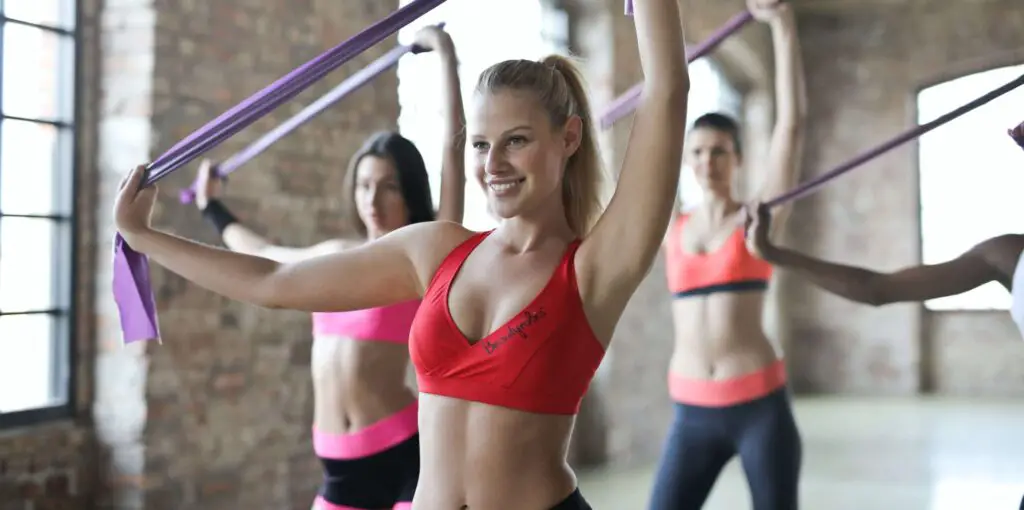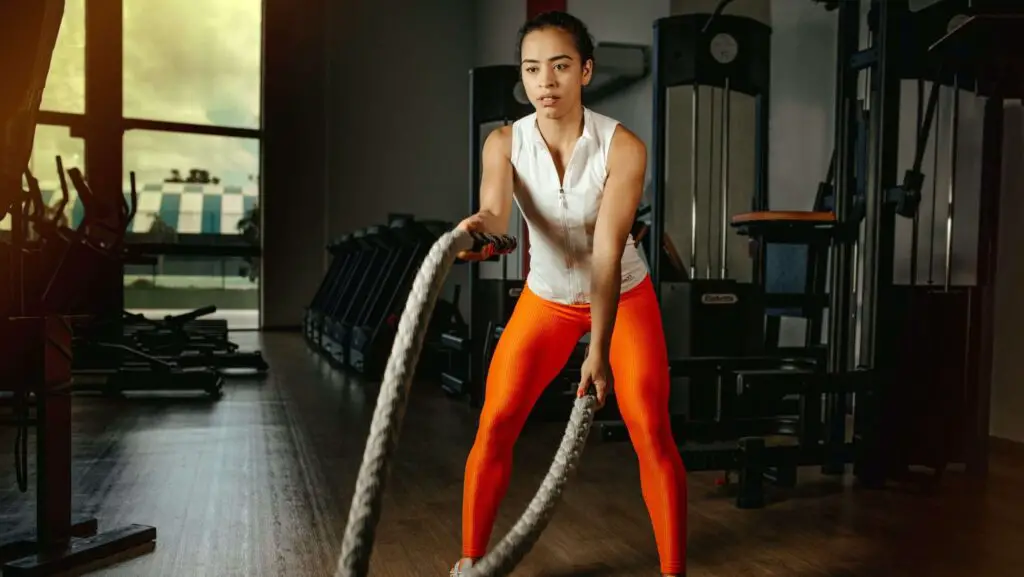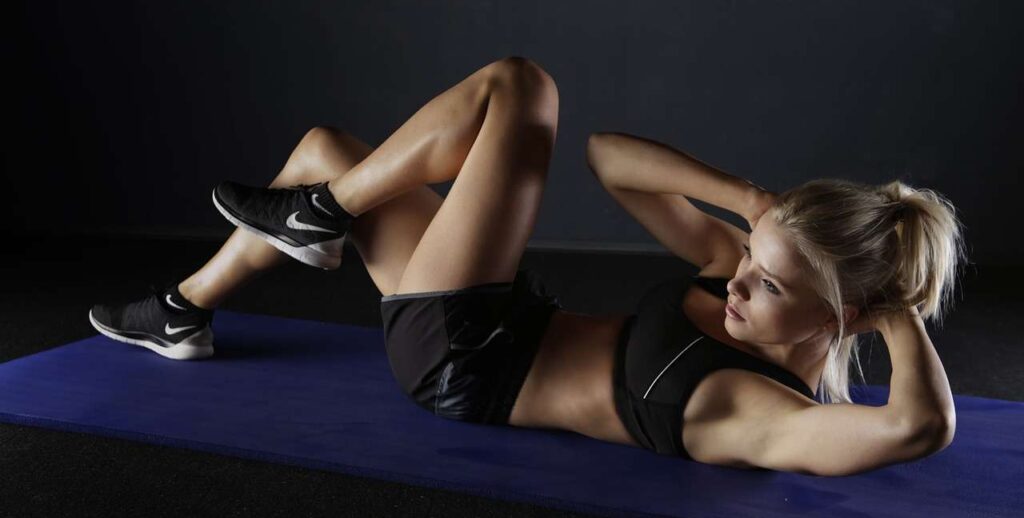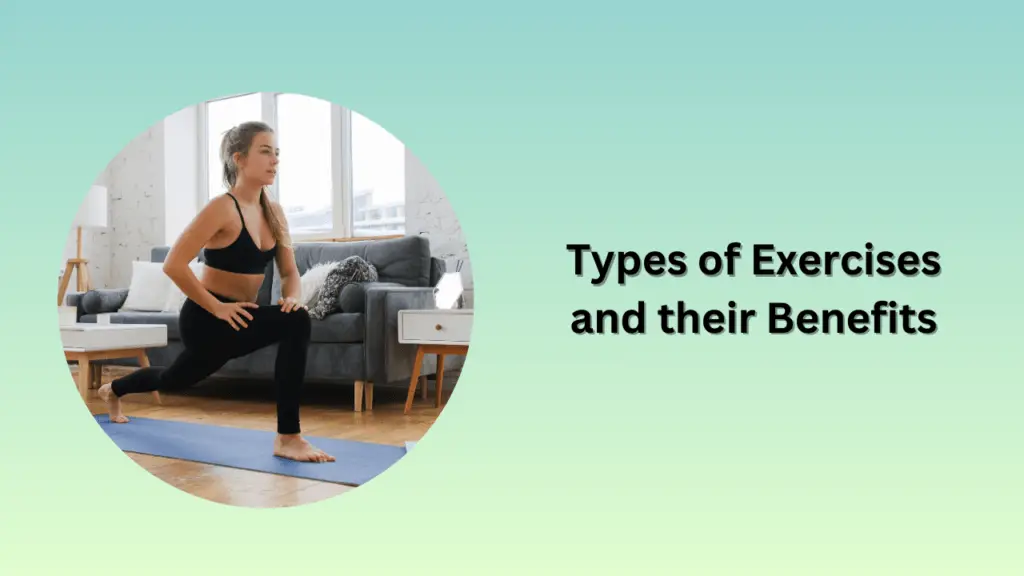Table of Contents
ToggleIntroduction
Exercise is essential for maintaining good health and overall well-being. Regular physical activity has been proven to have numerous benefits for the body and mind. In this blog post, we will explore different types of exercises and their benefits.
Importance of Exercise for Overall Health and Well-being
To promote general health and well-being, exercise is essential. It helps to maintain a healthy weight, improves cardiovascular health, strengthens muscles and bones, boosts mood, reduces the risk of chronic diseases, and enhances cognitive function.
Engaging in regular exercise not only improves physical fitness but also has a positive impact on mental health. Physical activity releases endorphins, known as the “feel-good” hormones, which help alleviate stress, anxiety, and depression. Exercise can also improve sleep quality, increase energy levels, and promote a sense of overall well-being.
Different types of exercises and Their Respective Benefits

There are various types of exercises, each providing unique benefits for the body. Let’s explore the different categories and their advantages.
Cardiovascular Exercises
Cardiovascular exercise, also known as aerobic exercise, focuses on improving the body’s cardiovascular system. They increase the heart rate, breathing rate, and circulation, promoting a healthier heart and lungs.
Aerobic Exercises
Aerobic exercises include activities that get the heart pumping and increase oxygen intake. Jogging, cycling, swimming, dancing, and aerobics classes are examples of aerobic exercises. These activities offer multiple benefits, such as:
- Improved heart health: Aerobic exercises strengthen the heart muscles, increase the heart’s efficiency, and lower the risk of heart disease.
- Increased stamina: Regular aerobic exercises enhance endurance levels, allowing individuals to engage in physical activities for longer durations without tiring easily.
- Weight management: Aerobic exercises burn calories and help maintain a healthy weight, making them an essential component of any weight loss or weight maintenance program.
Getting started with aerobic exercise can be as simple as taking a brisk walk around the neighborhood or playing an active sport. It is crucial to start slowly and gradually increase both intensity and duration to prevent injury and allow the body to adapt. Maintaining a consistent aerobic exercise routine is key to reaping its benefits.
High-Intensity Interval Training (HIIT)

High-Intensity Interval Training (HIIT) is a type of cardiovascular exercise that involves alternating between short bursts of intense exercise and periods of active recovery. HIIT workouts may include exercises like sprinting, cycling, or bodyweight movements.
Benefits of HIIT include
- Increased calorie burn: HIIT workouts have been found to burn more calories than traditional cardio exercises due to their intense nature and the metabolic effects they have on the body.
- Improved metabolism: HIIT workouts stimulate the production of human growth hormone (HGH) and increase metabolic rate, leading to continued calorie burn even after the workout is over.
- Time-efficiency: HIIT workouts are typically shorter than traditional cardio sessions, making them a perfect choice for individuals with busy schedules.
When incorporating HIIT into a fitness routine, it is essential to start with shorter workouts and gradually increase the intensity and duration. It is also crucial to listen to the body, take regular rest days, and ensure proper form during exercises.
Low-Impact Cardio Exercises
For individuals with joint problems or injuries, low-impact cardio exercises provide an excellent alternative to high-impact activities. These exercises minimize stress on the joints while still providing cardiovascular benefits.
Examples of low-impact cardio exercises include walking, swimming, dancing, and low-impact aerobics. The advantages of low-impact exercises include:
- Reduced joint strain: With low-impact exercises, the risk of joint injuries or aggravating existing conditions is much lower than with high-impact activities.
- Improved joint flexibility: Low-impact cardio exercises help increase joint mobility and flexibility, promoting better overall joint health.
- Customizable workout routine: Individuals can design a low-impact cardio workout routine that suits their fitness level and preferences, making it accessible to people of all ages and abilities.
To design an effective low-impact cardio workout routine, it is essential to choose exercises that engage the entire body and include a proper warm-up and cool-down. It is also beneficial to incorporate strength training exercises to further enhance overall fitness.
Strength and Resistance Training

Strength and resistance training focuses on building muscle strength and tone. These exercises typically involve using weights, resistance bands, or body weights to create resistance, challenging the muscles to become stronger.
Weightlifting
Weightlifting exercises involve using free weights or weight machines to strengthen specific muscle groups. Weightlifting offers numerous benefits, including:
- Increased muscle strength and tone: Weightlifting helps build lean muscle mass, improves muscle definition, and enhances overall strength and power.
- Improved bone density: Weightlifting promotes the growth of new bone tissue, ultimately preventing conditions like osteoporosis and reducing the risk of fractures.
- Enhanced metabolic rate: Strength training increases the body’s metabolic rate, allowing individuals to burn calories even at rest.
When starting a weightlifting routine, it is crucial to begin with lighter weights and focus on proper form to minimize the risk of injury. Seeking guidance from a qualified personal trainer can also ensure correct technique and help tailor a program to individual goals and fitness levels.
Bodyweight Exercises
Bodyweight exercises utilize the individual’s body weight as resistance. These exercises can be performed anywhere, making them highly convenient. Burpees, planks, lunges, squats, and push-ups are a few bodyweight exercises.
Benefits of bodyweight exercises
- Improved functional strength: Bodyweight exercises mimic real-life movements, enhancing overall strength, stability, and mobility for daily activities.
- Increased flexibility: Many bodyweight exercises require a good range of motion, promoting flexibility and preventing muscle imbalances.
- Convenience: Bodyweight exercises can be performed at home, in parks, or during travel, eliminating the need for specialized equipment or gym memberships.
Modifications for different fitness levels, such as easier or more challenging variations, can be made to ensure progress and avoid plateaus. Following recommended bodyweight workout programs or consulting with a fitness professional can provide structure and guidance.
Resistance Band Training
Resistance band exercises involve using elastic bands to create resistance and challenge the muscles. This form of training offers unique advantages, including:
- Improved muscle endurance: Resistance bands allow for continuous tension throughout an exercise, enhancing muscle endurance over time.
- Joint stability: Resistance band exercises target both major and stabilizer muscles, supporting joint stability and reducing the risk of injuries.
- Injury prevention: The low-impact nature of resistance band exercises makes them suitable for individuals recovering from injuries or with joint conditions.
When incorporating resistance band workouts, it is important to select bands that provide appropriate resistance for the desired exercise. It is recommended to start with lighter bands and gradually progress to heavier ones as strength improves.
Flexibility and Balance Exercises

Flexibility and balance exercises focus on improving joint mobility, range of motion, and stability.
Yoga
Yoga is a mind-body discipline that incorporates breathing exercises, meditation, and physical postures. It provides many advantages, such as:
- Improved flexibility: Yoga poses help stretch muscles, increasing flexibility, and promoting better joint range of motion.
- Enhancing balance: Many yoga poses require concentration and balance, improving stability and reducing the risk of falls.
- Stress reduction: The combination of physical movement, deep breathing, and mindfulness in yoga helps reduce stress and anxiety, and promotes relaxation.
There are various types of yoga practices, such as Hatha, Vinyasa, Ashtanga, and Kundalini, each catering to different needs and preferences. Online tutorials and local yoga classes can provide beginners with resources to start their yoga journey.
Pilates
Pilates is a low-impact training technique that emphasizes body alignment, flexibility, and core strength. The benefits of incorporating Pilates into a fitness routine include:
- Improved posture: Pilates exercises target the postural muscles, promoting better alignment and reducing the risk of musculoskeletal imbalances.
- Enhanced coordination: Pilates emphasizes precise movements and control, enhancing coordination and body awareness.
- Injury prevention: By strengthening the core and enhancing muscle balance, Pilates can help prevent injuries by improving stability and supporting proper movement mechanics.
Finding qualified pilates instructors and joining classes with small group sizes or one-on-one sessions is recommended to ensure proper guidance and form.
Tai Chi
Tai Chi is a traditional Chinese practice that combines slow, flowing movements with deep breathing and mental focus. This holistic exercise has numerous health benefits, including:
- Improved stability: The slow, controlled movements in Tai Chi improve balance, coordination, and stability, reducing the risk of falls in older adults.
- Reduced stress: The focused and meditative nature of Tai Chi promotes relaxation and reduces stress levels, benefiting mental well-being.
- Increased mindfulness: Tai Chi encourages mindful awareness of the present moment, helping individuals cultivate a sense of calm and focus.
For beginners, it is advisable to seek guidance from experienced Tai Chi instructors or join classes to learn different forms and techniques.
Summary and FAQs
In summary, engaging in different types of exercises offers a multitude of benefits for overall health and well-being. Cardiovascular exercises improve heart health, increase stamina, and aid in weight management. Strength and resistance training enhance muscle strength, boost metabolism, and improve bone density. Flexibility and balance exercises like yoga, Pilates, and Tai Chi promote flexibility, balance, stress reduction, and body awareness.
Here are some frequently asked questions about exercises and their benefits:
Is it necessary to do all types of exercises?
Engaging in a combination of cardiovascular exercises, strength and resistance training, and flexibility and balance exercises is ideal for overall fitness. However, it is not necessary to do every type of exercise. Select enjoyable activities that support your fitness objectives.
Can exercise reduce stress and anxiety?
Yes, exercise has been shown to reduce stress and anxiety by increasing the production of endorphins, improving mood, and providing an outlet for releasing tension.
How often should I exercise?
It is recommended to engage in at least 150 minutes of moderate-intensity aerobic activity or 75 minutes of vigorous aerobic activity per week, along with strength training exercises two or more days per week. If you have any particular worries or medical conditions, pay attention to your body and speak with a healthcare provider.
Remember, always consult with a healthcare professional or qualified fitness instructor before starting any new exercise routine, especially if you have any pre-existing medical conditions or concerns.
Incorporating regular exercise into your lifestyle can have a profound impact on your physical health, mental well-being, and overall quality of life. Start by finding activities that you enjoy and gradually build a routine that suits your needs. So, get moving and experience the many benefits of exercise today!
“Exercise is medicine, and movement is therapy. Utilize the power of exercise to change your life.”

